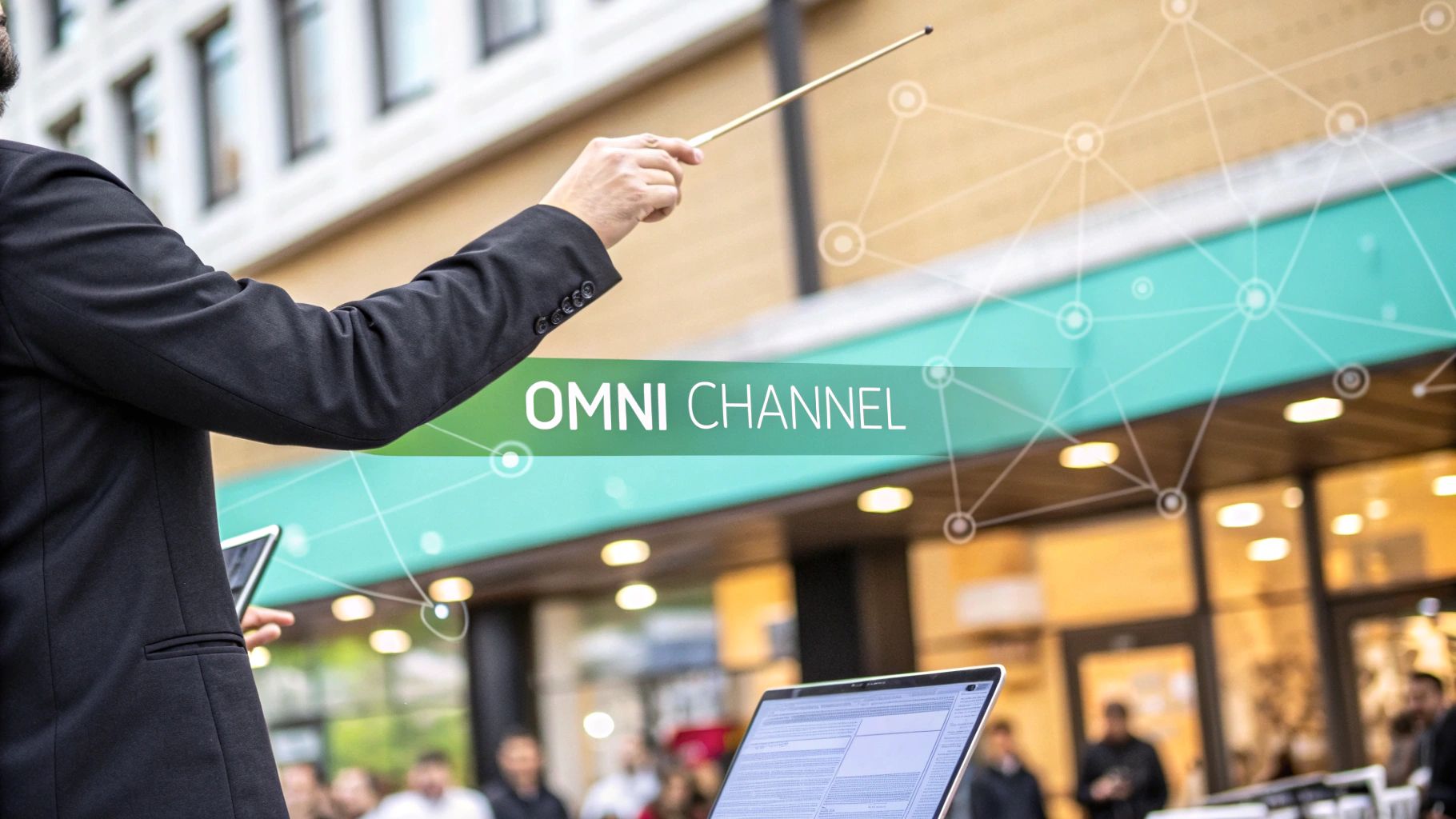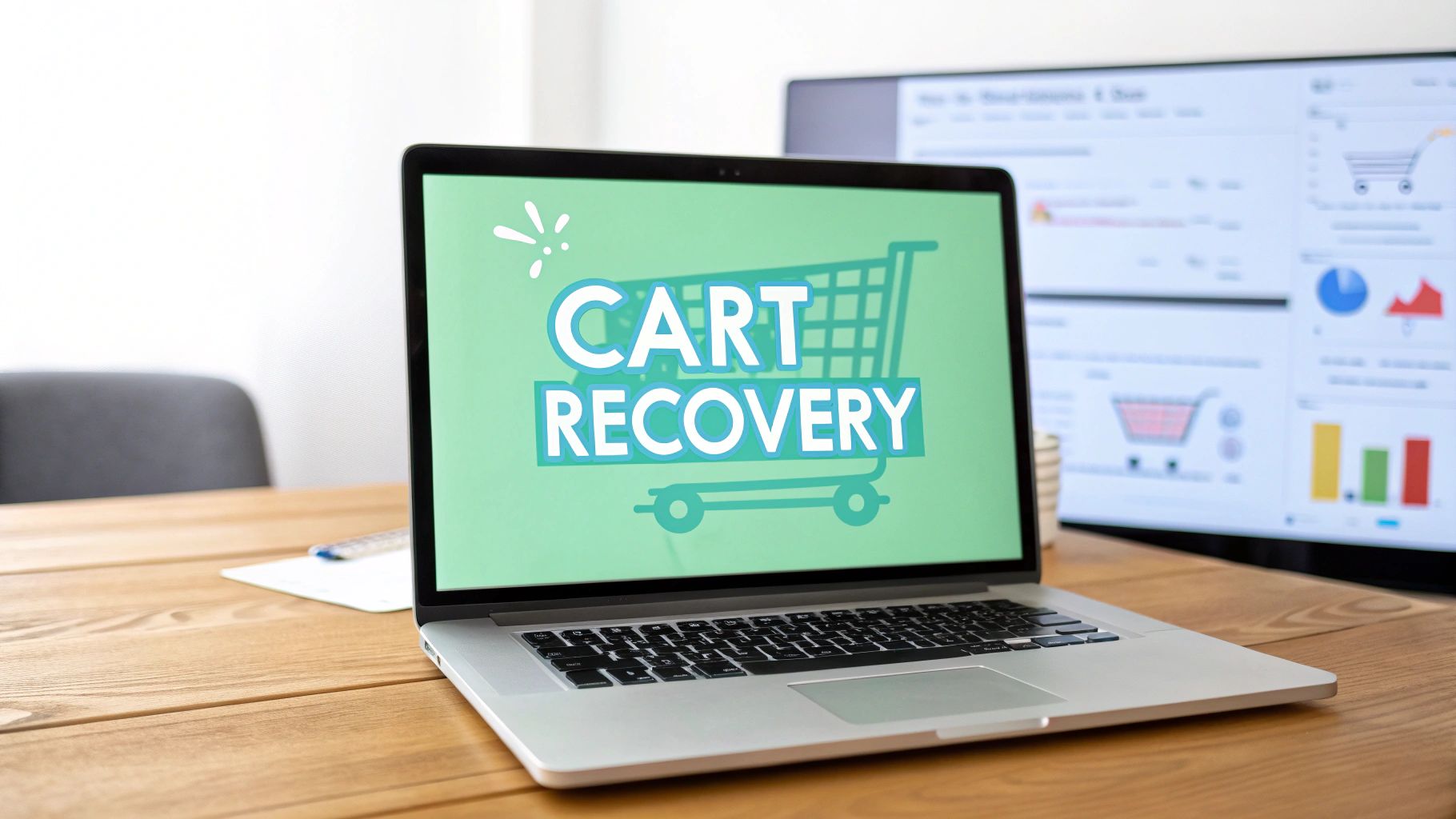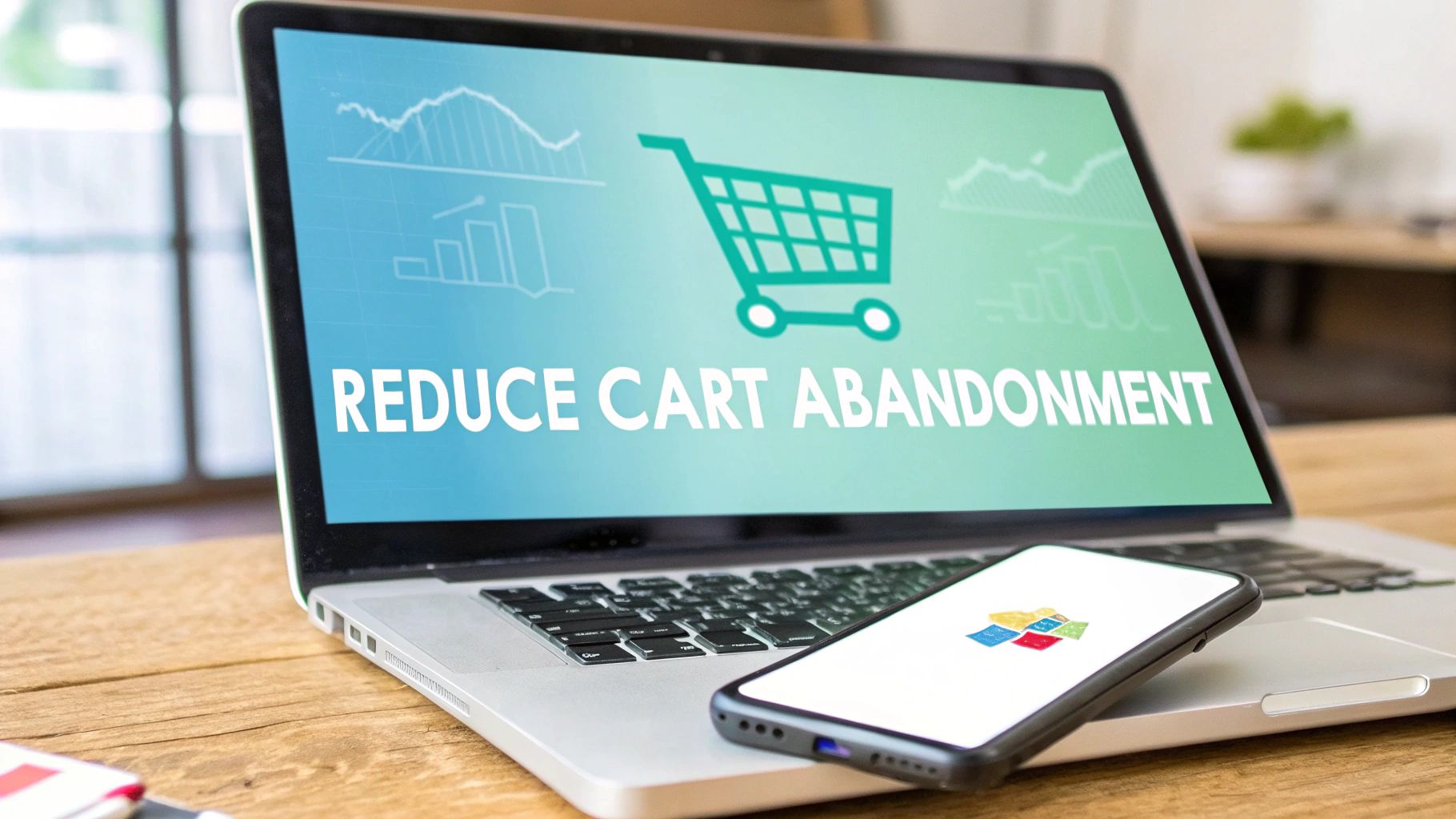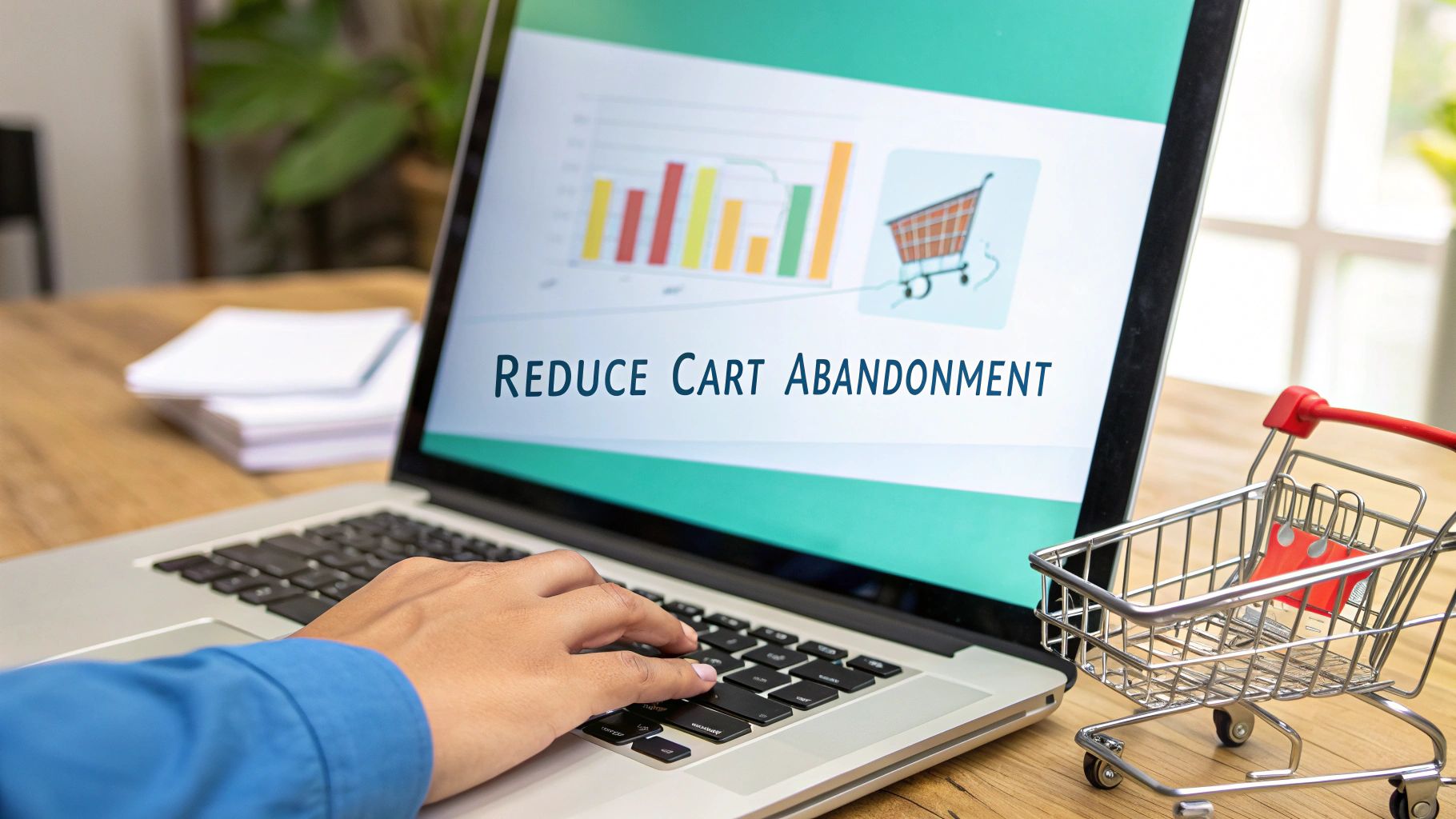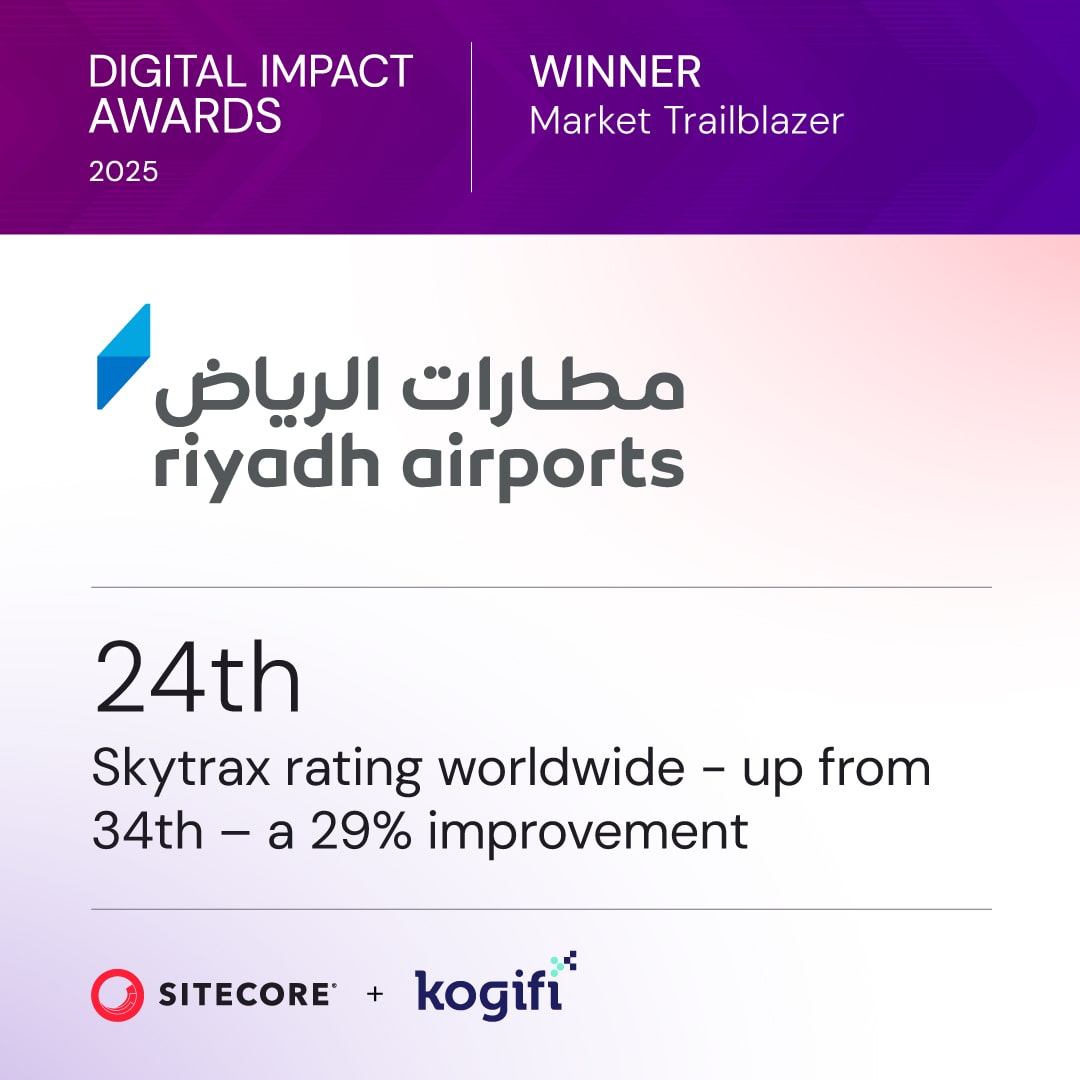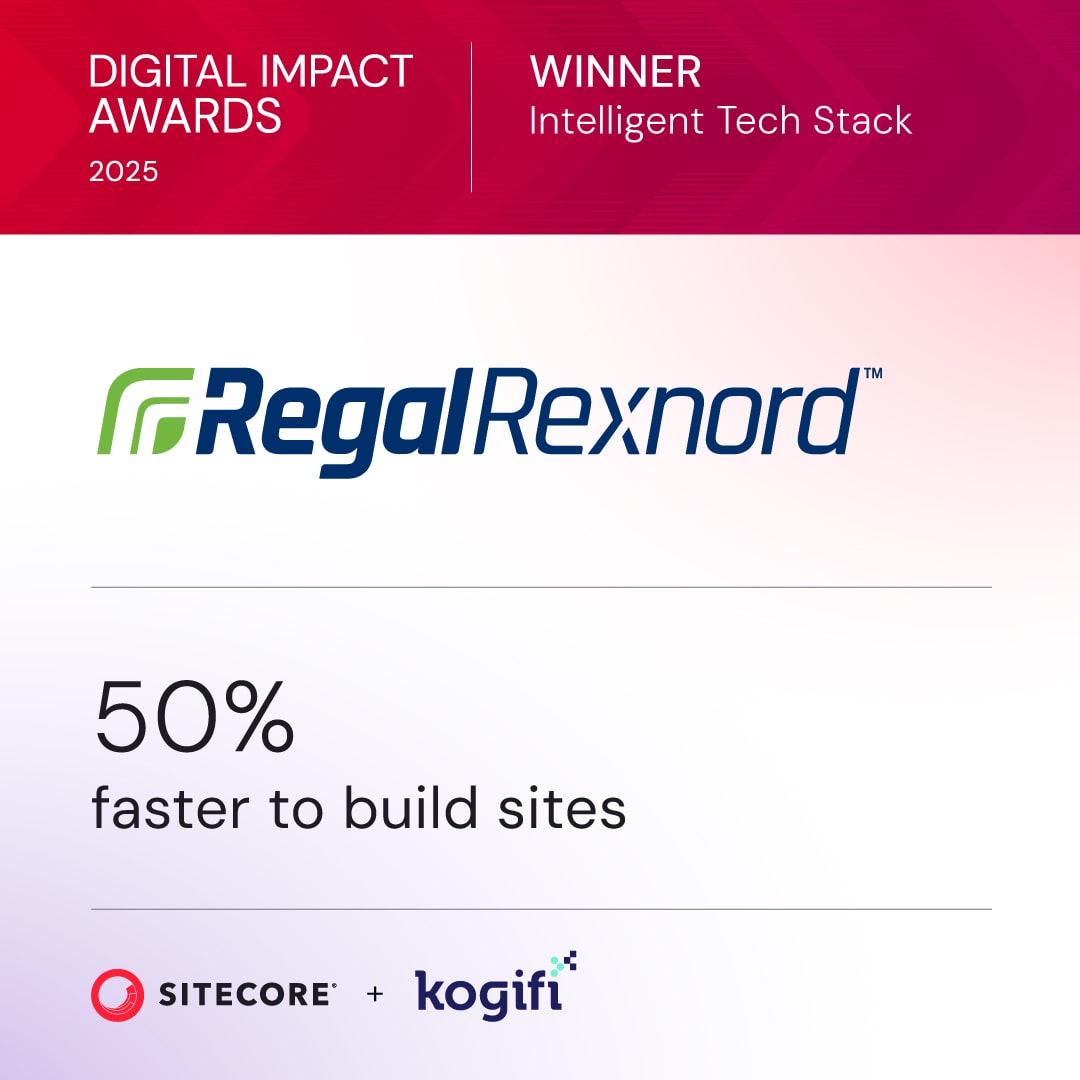Omni-channel customer engagement isn't just about being everywhere your customers are. It's about creating one, continuous conversation that flows seamlessly across every touchpoint—from your website and mobile app to your social media and even in-store.
Unlike a multichannel setup where each channel is its own little island, an omni-channel strategy weaves them all together. The goal? To make the customer feel seen and understood, no matter how they choose to connect with your brand.
Moving From Disconnected Channels to Unified Engagement
Think about a time you added an item to your shopping cart on a mobile app during your morning commute. Later that day, you hop on your laptop, open the company’s website, and that same item is right there waiting for you. That smooth, effortless handoff is omni-channel customer engagement in action. It’s the difference between simply showing up on multiple platforms and orchestrating them into a single, intelligent system that puts the customer at the center.
In the old, disconnected multichannel world, the website, social media, and physical store all act like separate businesses. A conversation you start with a support agent on web chat vanishes the moment you pick up the phone to call them. This forces you to repeat yourself, creating friction and turning a simple request into a frustrating ordeal. An omni-channel approach breaks down those silos, making sure the context and history of your interactions travel with you.
The Foundation of a Unified Profile
The engine that powers this whole experience is a centralized customer profile. This isn't just a static contact record; it's a living, breathing file that pulls together every interaction, preference, and behavior from every single touchpoint. Technologies like Sitecore's Customer Data Platform (CDP) are built for exactly this. They act as the central nervous system, collecting data from your website, mobile app, CRM, and even in-store point-of-sale systems.
This unified profile lets you see the whole picture of a customer's journey, not just scattered pieces of it. Internally, a platform like SharePoint can become the central hub where teams access these insights. This ensures marketing, sales, and service are all singing from the same hymn sheet—a crucial step for delivering a truly consistent experience on the outside.
An omni-channel approach transforms the customer relationship from a series of disjointed transactions into a continuous, evolving dialogue. It's the difference between shouting messages from different rooms and having a coherent conversation in one.
The impact on business is massive. Companies that get omni-channel service right see customer satisfaction scores climb to 67%, which is more than double the 28% rating for businesses stuck in a disconnected multichannel rut. Yet, despite the clear wins, only 13% of companies actually carry customer context across all their channels. This reveals a huge opportunity for businesses ready to invest in a truly integrated strategy.
As you can discover more about these omnichannel service statistics, this gap highlights why platforms designed for deep integration are no longer a luxury—they're a necessity.
The Blueprint for a Winning Omni Channel Strategy
Crafting a successful omni channel strategy is a lot like designing a high-performance engine; it requires distinct, powerful components working in perfect harmony. A winning blueprint rests on four interdependent pillars that transform fragmented customer interactions into a single, intelligent conversation. If you neglect any one of these pillars, the entire structure risks collapsing, leaving you with a disconnected and frustrating customer experience.
These components aren't just theoretical concepts. They're the actionable parts of a system designed to put the customer at the absolute center of every business decision. Each pillar supports the others, creating a feedback loop that continually refines and improves every interaction.
This infographic shows how a central customer profile acts as the foundation, feeding intelligence into both online and offline channel experiences.
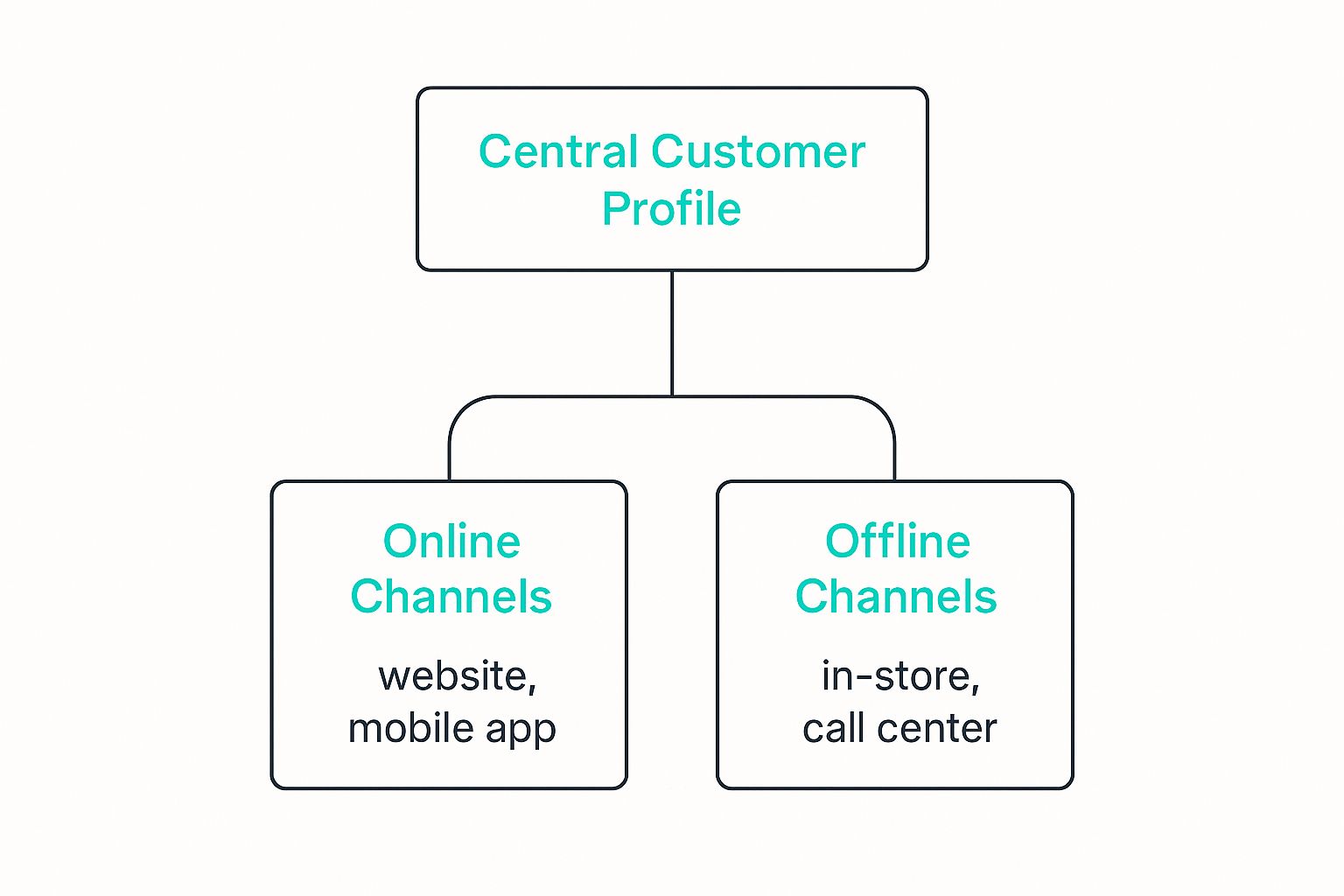
This structure makes it clear: without that single source of truth at the top, every channel interaction that follows will remain siloed and ineffective.
Pillar 1 Unified Customer Profile
The absolute foundation of omni channel customer engagement is the Unified Customer Profile. Think of this as the central nervous system of your entire strategy. Without it, you’re flying blind, treating every customer interaction as if it's the very first time you've met.
A platform like Sitecore Customer Data Platform (CDP) is purpose-built for this exact job. It pulls together data from every touchpoint—website clicks, mobile app usage, email opens, in-store purchases, and call center inquiries—into one persistent source of truth. The result is a rich, 360-degree view of each customer that tracks their journey in real time.
Pillar 2 Consistent Cross-Channel Experiences
With a unified profile in place, the next pillar is delivering a Consistent Cross-Channel Experience. This means your brand’s voice, messaging, and the customer's personal context must stay the same whether they're browsing your website, using your mobile app, or talking to someone in a physical store.
This consistency builds trust. It just makes sense. If a customer adds an item to their cart on their phone, they expect to see it waiting for them when they log in on their laptop later. Sitecore's composable DXP architecture ensures that content and context flow seamlessly between channels, creating one continuous brand conversation.
Pillar 3 Personalization at Scale
The third pillar, Personalization at Scale, is where the magic really happens. A unified profile and consistent channels set the stage; personalization is the main performance. It’s all about using that real-time data to serve up hyper-relevant content, offers, and experiences to each individual.
This is the sweet spot for tools like Sitecore Personalize. It taps into the rich data from the CDP to make intelligent decisions in milliseconds. For example, it can dynamically change website content based on a user's past purchases or browsing history, turning a generic visit into a highly curated journey that naturally drives conversions.
True personalization isn't just about using a customer's first name in an email. It’s about anticipating their needs and delivering the right experience, on the right channel, at the exact moment it matters most.
Pillar 4 Seamless Data Integration
Finally, the fourth pillar is Seamless Data Integration, and this one is all about empowering your internal teams. You can't possibly deliver a flawless front-end customer experience if your own teams are working with fragmented, incomplete information on the back end.
This is where solutions like SharePoint play a vital role. By integrating with platforms like Sitecore, SharePoint becomes a centralized knowledge hub. Customer service agents, for instance, can access a customer's complete interaction history, allowing them to provide informed, context-aware support without forcing the customer to repeat themselves. This internal alignment is what makes the customer experience truly seamless, both inside and out.
Building Your Omni-Channel Engine with Sitecore DXP
Moving from a smart strategy to a working reality requires a powerful, flexible tech foundation. To pull off true omni-channel customer engagement, you need more than a messy toolbox of disconnected apps—you need an integrated engine. This is where Sitecore’s composable Digital Experience Platform (DXP) comes in, giving you the horsepower needed for modern customer journeys.
The old way of doing things—using a clunky, monolithic DXP that tried to do everything—just doesn’t cut it anymore. It’s too rigid to keep up with new channels and ever-changing customer expectations. A composable DXP, on the other hand, lets you pick and choose the best tools for the job, assembling a custom tech stack from specialized, interoperable components. This gives you the freedom to adapt and scale as your business grows.
This screenshot from Sitecore's website shows how their modern, composable products fit together to build personalized digital experiences.
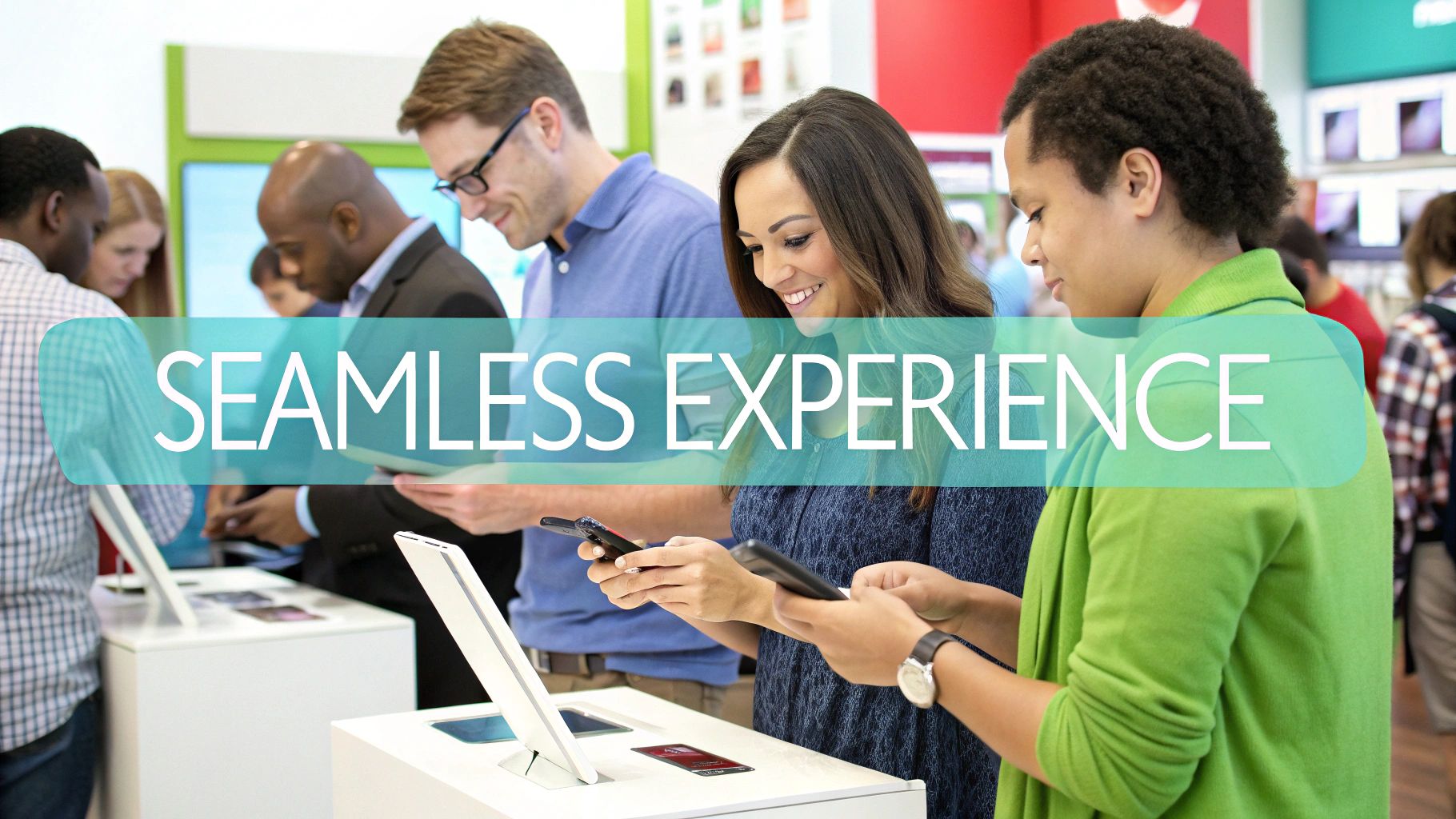
You can see how powerful, individual products like Content Cloud, Engagement Cloud, and Commerce Cloud work together to create one unified platform.
The Content Hub: Sitecore XM Cloud
At the heart of any consistent omni-channel experience is a single source of truth for your content. That's exactly what Sitecore XM Cloud delivers. It functions as a central, headless content hub. "Headless" just means the content itself (the "body") is separate from how it's displayed (the "head").
This structure is a game-changer for omni-channel delivery. Your teams can create a piece of content once and push it anywhere—a website, a mobile app, a digital kiosk, or even an IoT device—without having to rebuild it for each specific channel. This guarantees your brand messaging and product info are perfectly consistent everywhere, which is the bedrock of a trustworthy customer experience.
The Brain: Sitecore CDP
If XM Cloud is the content hub, then Sitecore CDP (Customer Data Platform) is the intelligent "brain" of your engagement engine. We’ve already established that a unified customer profile is non-negotiable for any omni-channel strategy, and Sitecore CDP is built to do exactly that. It pulls in, stitches together, and unifies customer data from every touchpoint imaginable.
This includes data like:
- Behavioral Data: Website clicks, app usage, and which pages they viewed.
- Transactional Data: Past purchases, returns, and abandoned cart activity.
- Demographic Data: Information from your CRM or user-submitted profiles.
- Offline Data: Interactions from in-store visits or calls to your contact center.
By consolidating all this information into a single, 360-degree view of each customer, Sitecore CDP provides the raw intelligence you need for real personalization. It breaks down the data silos that so often get in the way, making sure every team in your organization sees the same, complete customer picture.
An omni-channel engine without a powerful CDP is like a car with no driver. It may have all the parts, but it lacks the intelligence to navigate the customer's journey and react to changes in real time.
The Engine: Sitecore Personalize
With all that data neatly unified by the CDP, Sitecore Personalize steps in as the real-time decisioning "engine." This is where the magic happens, turning raw data into in-the-moment experiences that feel personal and relevant. Sitecore Personalize uses advanced algorithms and A/B testing to figure out the next best action for each individual user.
For example, imagine a customer browsed hiking boots on your mobile app. The next time they visit your website, Sitecore Personalize can instantly show them a banner featuring a new line of waterproof gear. This isn’t just basic personalization; it’s a dynamic, context-aware response that shows you're paying attention. It’s what turns a consistent journey into a genuinely engaging one. For a deeper look at what the platform can do, check out our detailed guide on Sitecore platforms.
The Transactional Layer: Sitecore OrderCloud
For any business where transactions are part of the journey, seamless commerce is a must-have. Sitecore OrderCloud is a MACH-certified (Microservices-based, API-first, Cloud-native, Headless) commerce platform built to handle complex B2B, B2C, and even B2B2C scenarios.
Because it’s API-first, you can embed buying functionality into any channel or touchpoint. A customer could start an order on their phone, get help from a chatbot, and finish the purchase with a sales rep—all while their order history and context stay perfectly intact. OrderCloud makes sure the buying experience is just as smooth and connected as the content experience.
Why Omni Channel Drives Unmatched Retention and Growth
Investing in a true omni channel customer engagement strategy isn't just another line item on the budget; it's one of the most powerful engines you can build for driving revenue and creating fierce brand loyalty. The real magic lies in its proven ability to dramatically improve customer retention. When customers feel truly seen and understood at every turn, they have very few reasons to look elsewhere.
This seamless experience is what turns one-time buyers into lifelong fans, directly boosting their lifetime value (LTV). It's a simple truth: shoppers who engage with a brand across multiple, connected touchpoints spend more money and stick around longer. The old, fragmented approach just leaves money on the table. A unified strategy, on the other hand, creates a compounding effect on customer value that grows over time.
You can find more on the specifics in guides covering strategies to improve customer retention.
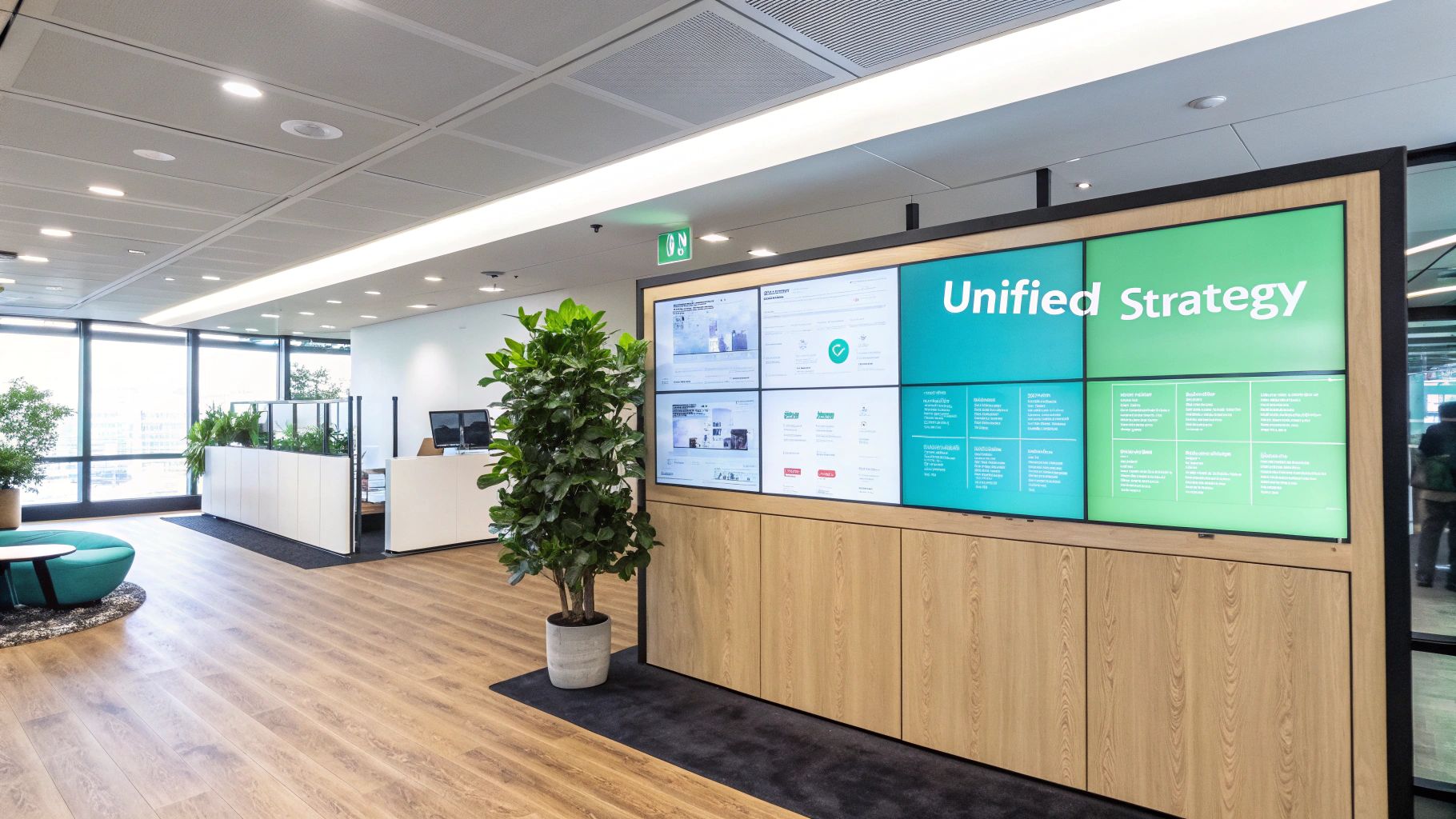
The Cold, Hard Data Behind Omni Channel ROI
If you’re still on the fence, the numbers make the business case undeniable. Companies with a strong omni channel approach retain an average of 89% of their customers.
That number is staggering when you compare it to the 33% retention rate for companies with weak, siloed channel efforts. It’s a completely different ballgame.
And it gets better. Those retained customers are also more valuable. Shoppers who move between online and in-store channels are worth about 30% more over their lifetime than single-channel shoppers. This proves that deep integration isn't just about a "better experience"—it's a direct line to more profitable growth.
A strong omni channel strategy effectively builds a competitive moat around your customer base. When every interaction is connected and intelligent, the cost of switching to a competitor becomes too high for the customer.
To really see the difference a strong omni channel strategy makes, let's compare some key performance metrics side-by-side.
Omni Channel vs. Weak Omni Channel Performance Metrics
As the table shows, the gap between a unified and a siloed approach is massive. The numbers clearly point to omni channel as the path to sustainable growth, not just short-term wins.
How Integration Fuels Profitable Growth
This high-retention environment is powered by a deep, holistic understanding of the customer, which is only possible when your data is fully integrated. Coordinated campaigns running across three or more channels will always blow siloed efforts out of the water.
The reason is simple: a unified message, reinforced across different touchpoints, builds momentum and recognition far more effectively than isolated ads ever could. It’s the difference between a whisper and a chorus.
Of course, this requires a solid tech foundation where customer data can flow freely between systems. This is where platforms like Sitecore DXP and SharePoint come in. Sitecore is built to unify customer data and deliver those personalized experiences, while SharePoint can serve as a vital internal knowledge base, arming your front-line employees with the context they need to shine.
The real key is breaking down the walls that separate marketing, sales, and service. When data flows seamlessly, every team is working from the same playbook, turning every touchpoint into a chance to strengthen the relationship. When done right, these customer data integration solutions are what transform a collection of disconnected channels into a singular, powerful growth engine.
Ultimately, omni channel isn't just a marketing tactic. It's a core business strategy that puts the customer at the absolute center of every operation, directly linking a superior experience to sustainable, long-term profitability.
Mapping the Modern Customer Journey
To get omni channel customer engagement right, you have to throw out the old map. The idea of a clean, linear customer path from A to B is a relic. Today’s journey is a fluid, dynamic web of touchpoints, weaving seamlessly between the digital and physical worlds. Customers don’t “go online” or “go to a store” anymore—they’re always connected, grabbing whichever channel is most convenient at that exact moment.
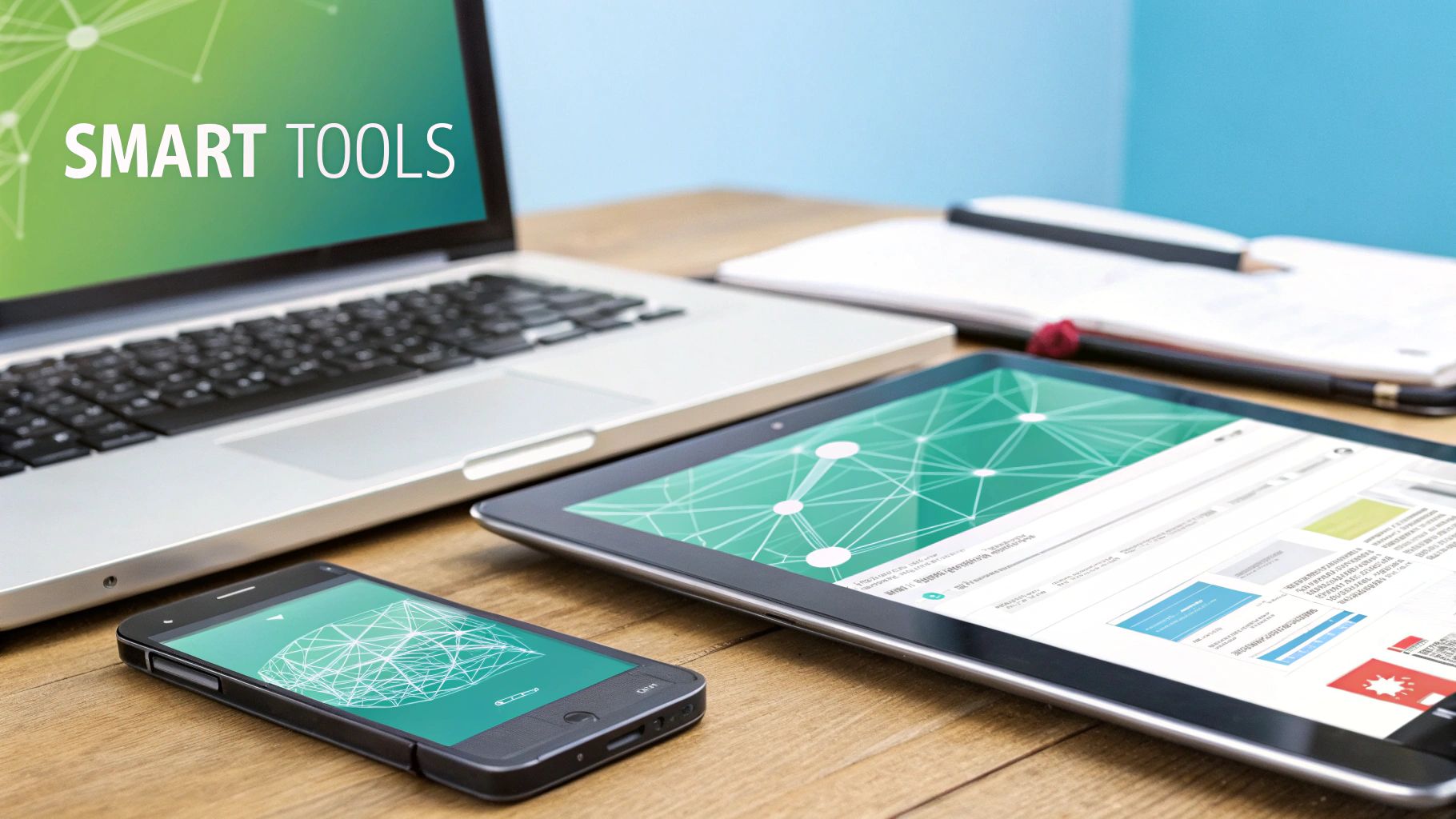
Think about a typical journey. A commuter browses a product on a mobile app during their train ride, swings by a physical store on their lunch break to see it in person, then finally clicks “buy” on their laptop that evening. Each of these moments is just one piece of a single, continuous experience. A siloed, channel-by-channel view sees these as three separate events, completely missing the bigger picture of what the customer is trying to do.
Following the Fragmented Trail
The modern customer journey is naturally fragmented, and it's only getting more complex. On average, shoppers now interact with a brand across six touchpoints before making a purchase. The lines between online and offline have all but vanished.
Consider this: 59% of consumers head to stores to check out products before buying online, while 37% do their homework online before purchasing in-store. With 90% of customers using multiple devices to complete a single task, a consistent experience isn't a bonus—it's the baseline expectation. You can discover more omnichannel shopping statistics that paint a clear picture of this new reality.
This is exactly where an integrated platform becomes non-negotiable. A system like Sitecore DXP isn't just built to handle this fragmentation; it’s designed to turn it into an advantage by tracking, unifying, and personalizing the entire journey, no matter how scattered it seems.
From Data Points to a Cohesive Narrative
A powerful DXP stitches these disconnected interactions into a single, cohesive story. Sitecore's Customer Data Platform (CDP), for example, is built specifically to pull signals from every channel—web, mobile, social, in-store—and assemble them into one unified customer profile. This is the crucial first step to turning a mess of raw data into something you can actually use.
A siloed approach is like trying to understand a novel by reading random, disconnected pages. An integrated platform like Sitecore allows you to read the entire book, understanding the full character arc of your customer's journey.
Once you have that unified view, the real personalization can start. Sitecore Personalize uses this rich, contextual data to deliver relevant experiences in real-time. It ensures the conversation with your customer picks up right where it left off, no matter which channel they jump to next.
Internally, giving your teams that same unified view is just as critical. A solution like SharePoint can serve as a central hub of knowledge, giving your customer service and sales teams access to the same journey insights. This alignment ensures the experience customers get on the front lines perfectly matches the personalized digital journey you’ve carefully built. To lay this foundation, a detailed guide on using a customer journey mapping template can provide the structured approach needed to visualize and optimize these complex interactions effectively.
A Framework for Measuring Omni Channel Success
A world-class strategy demands world-class measurement. If you’re serious about proving the value of your omni channel customer engagement efforts, you have to look beyond isolated metrics like website traffic or app downloads. True success is measured by integrated Key Performance Indicators (KPIs) that tell the complete story of the customer journey.
This means making a critical shift in focus—away from channel-specific vanity metrics and toward customer-centric outcomes. The real goal is to understand how your unified strategy is building long-term relationships and driving profitability.
Key Metrics That Matter
Within a powerful analytics ecosystem like Sitecore's, you can finally track the KPIs that truly define omni channel success. The platform is built to connect data points across the entire customer lifecycle, giving you a clear, unobstructed view of what's actually working.
Here are the essential metrics to keep a close eye on:
- Customer Lifetime Value (CLV): This is the ultimate metric. It predicts the total revenue a single customer will generate over their entire relationship with your brand. A tool like Sitecore CDP excels at this by unifying purchase history and engagement data from all channels into a single, cohesive profile.
- Customer Retention Rate (CRR): This measures the percentage of customers who stick around over a specific period. A high CRR is a direct sign that your seamless experience is creating real value and stopping customers from churning.
- Cross-Channel Conversion Rates: Don't just track conversions on your website. Use Sitecore to analyze how journeys perform when they start on social media and end in-store (or any other combination). This is how you discover which pathways are most effective.
The real power of an omni channel framework isn't just in delivering a smooth experience; it's in being able to prove its financial impact with hard data. This shifts the conversation from a cost center to a core revenue driver.
Proving Definitive ROI
Measuring these integrated KPIs is exactly how you prove the definitive return on investment (ROI) of your efforts. Sitecore's analytics tools are designed to surface actionable insights, connecting your strategic initiatives directly to business outcomes. For instance, you can demonstrate how a personalized campaign delivered via Sitecore Personalize led to a 15% increase in repeat purchases from a specific customer segment.
This data-driven approach lets you build a compelling business case for stakeholders. Instead of presenting abstract ideas, you can show concrete evidence of how unifying customer data and experiences translates directly into increased loyalty and higher revenue. When this is combined with a robust internal knowledge base in a platform like SharePoint, your teams have both the customer-facing tools and the internal data visibility to continuously optimize performance. To dive deeper into quantifying these benefits, check out our guide on how to measure ROI effectively.
By adopting this measurement framework, you equip yourself with a data-backed plan to not only demonstrate value but also to fine-tune your engagement strategy for even greater success. It completes the cycle, turning insights from past interactions into fuel for future growth.
Frequently Asked Questions
Jumping into a fully integrated customer experience strategy can bring up a lot of questions. We've put together some straightforward answers to the most common ones we hear, especially when it comes to using platforms like Sitecore and SharePoint to make it all happen.
What Is the Main Difference Between Multichannel and Omni Channel Engagement
The biggest difference boils down to one word: integration.
Multichannel is simply having a lot of different, disconnected channels—a website, an app, social media, a physical store. They all exist, but they don't talk to each other. A customer's experience on one channel is completely separate from their experience on another. It's like having separate conversations that never link up.
Omni-channel customer engagement, on the other hand, weaves all those channels together into a single, seamless journey. The customer is always at the center, and their context and history follow them wherever they go. It turns fragmented interactions into one continuous conversation with your brand, no matter how they choose to connect.
How Does Sitecore DXP Enable an Omni Channel Strategy
Sitecore's composable DXP is basically built from the ground up for this kind of work. Instead of forcing you into a rigid, one-size-fits-all box, it gives you a powerful suite of specialized tools designed to work together perfectly.
- Sitecore CDP is the heart of the operation, pulling customer data from every single source into one unified profile.
- Sitecore Personalize then uses that rich data to deliver hyper-relevant experiences in the moment, right when it matters most.
- XM Cloud acts as the central command for all your content, letting you manage and deploy it to any touchpoint from one place.
This flexible, API-first approach means you can construct a tech stack that's perfectly suited to your needs today and can easily adapt as new channels pop up tomorrow. It’s the kind of solid foundation you need for a truly sophisticated omni-channel strategy.
What Is the First Step to Implement an Omni Channel Strategy
Before you do anything else, you have to get a complete, unified view of your customer. That means breaking down the data silos that keep your teams and technologies from talking to each other. You simply can't deliver a seamless experience if you don't understand your customer across every single touchpoint.
This journey almost always begins with putting a Customer Data Platform (CDP) in place, like Sitecore CDP. Its job is to pull in and stitch together data from your CRM, e-commerce platform, website analytics, and everywhere else. Once you have that single source of truth, you can finally map the customer journey accurately and pinpoint the best moments to deliver a personalized experience.
And for your internal teams? A platform like SharePoint can be a game-changer for sharing these insights, making sure everyone from marketing to sales is working from the same complete customer picture.
Ready to build a truly connected customer experience? The experts at Kogifi specialize in implementing Sitecore and SharePoint solutions that power world-class omni-channel strategies. Get in touch with us.

















